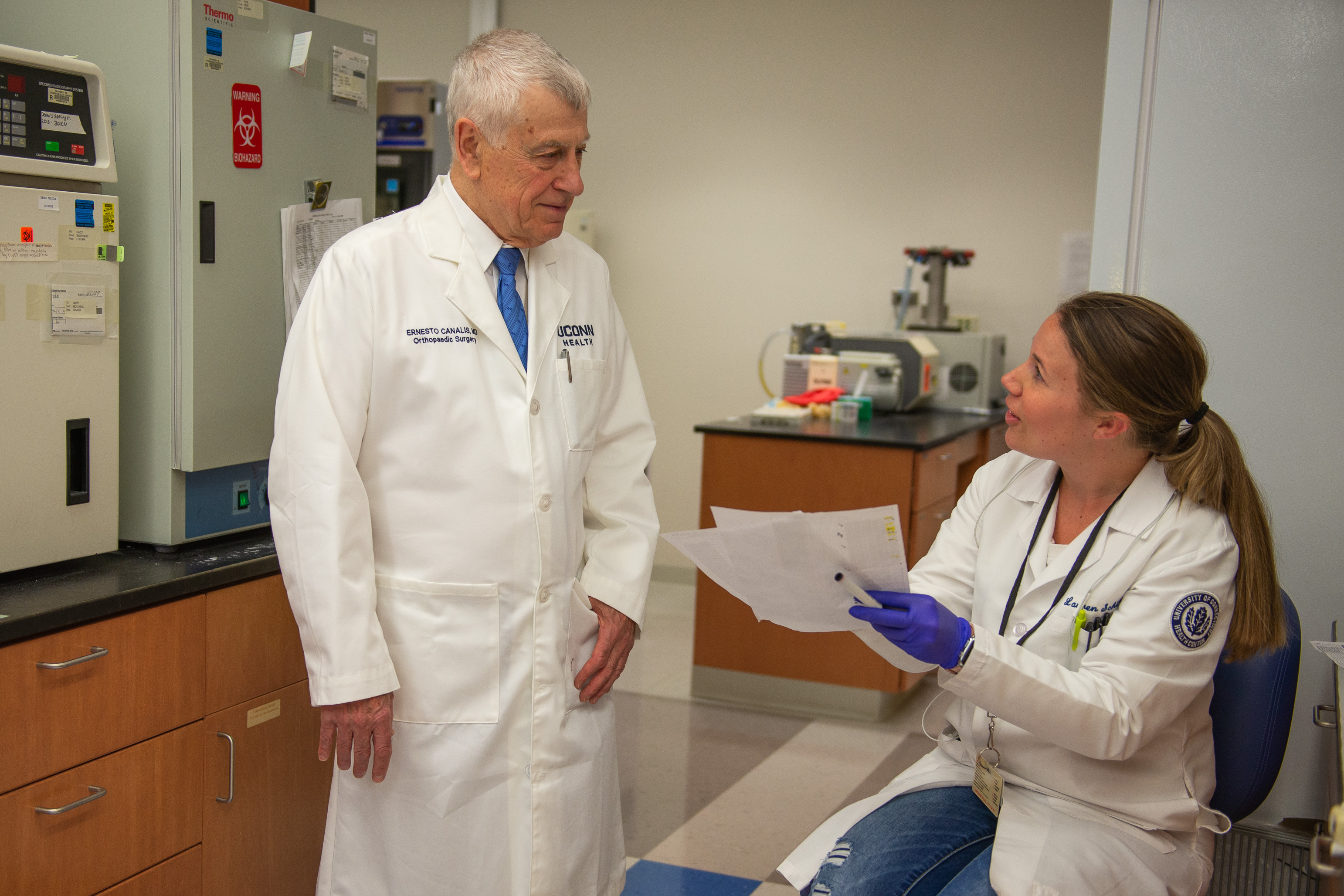Many conditions and diseases are caused by harmful mutations in our genes. But these mutations are often only on one copy of our DNA. Scientists have been researching a deceptively simple solution to this problem: turn off the mutated gene and let the unaffected gene do the legwork.
UConn Health professor of orthopaedic surgery and medicine and director of the Center for Skeletal Research Dr. Ernesto Canalis has received a grant from the National Institute of Arthritis and Musculoskeletal and Skin Diseases to investigate whether he can silence mutant genes responsible for serious skeletal diseases. This is the fifth NIH-funded grant Canalis has received since joining the UConn Health faculty a little more than five years ago.
Lehman Syndrome, also known as Lateral Meningocele Syndrome, is a rare genetic condition characterized by protrusions in the membranes surrounding the spinal cord that result in neurological impairment. This condition also causes developmental and intellectual delays and serious craniofacial and skeletal defects.
Lehman Syndrome is caused by a mutation in the NOTCH3 gene. The mutation leads to the creation of a truncated and stable NOTCH3 protein which causes excessive NOTCH3 function.
Canalis will apply a novel approach of administering anti-sense oligonucleotides. This approach is currently being tested in the treatment of genetic diseases affecting the central and peripheral nervous system, retina, and liver. This approach has never been applied to genetic disorders of the skeleton.
Scientists can use anti-sense oligonucleotide therapy when they know exactly which segment of DNA is responsible for a condition. They can synthesize a single strand of DNA that will bind to the messenger RNA from the defective gene. This will induce its degradation or prevent its translation, effectively turning the mutant gene off.
By targeting the mutant gene, Canalis and his team hopefully will be able to reverse or lessen the effects of the mutation in a mouse model of Lehman Syndrome. Since humans have two copies of every gene in our DNA, by silencing the defective one, the non-mutant gene should be able to operate normally. The human syndrome and mouse model are heterozygous for the mutation since having two mutant alleles would be lethal.
This project has the potential to have a wider impact on the treatment of other genetic skeletal conditions and presents a practical approach to target specific gene mutations responsible for multiple skeletal conditions.
“The study of rare diseases of the skeleton and the development of appropriate treatments will pose challenges, but it is imperative that we pursue this line of research,” Canalis says.
This project builds upon earlier findings by Canalis related to Hajdu Cheney Syndrome, another rare genetic skeletal condition. His laboratory created the first mouse model of the human disease verifying that a mutation in the NOTCH2 gene was responsible. The same group recently found that the skeleton of Hajdu Cheney mutant mice is sensitized to the osteolytic actions of tumor necrosis factor alpha. This leads to too much bone being degraded, one of the hallmarks of Hajdu Cheney Syndrome.
The study of these rare diseases has a much greater impact when put together, as they provide us with important insights into the genetic and molecular causes of these kind of conditions and more common ailments as well, says Canalis.
Dr. Canalis earned his medical degree at the Universidad Peruana Cayetano Heredia in Lima, Peru. He completed his residency at the UConn School of Medicine in internal medicine and trained in Endocrinology at Tufts New England Medical Center. The Canalis laboratory is known for the discovery of skeletal growth factors and has pursued important investigations on the role of growth factors and their antagonists in skeletal function. It has been funded continuously by the NIH for nearly 40 years.
This grant is NIH No.: 1R61AR076747.



